#beta geminorum
Text

The constellation of Gemini // Dawson Fehr
Read below the cut for info about what stars are in this image!
The two bright stars are Castor (blue) and Pollux (white). Pollux (β Geminorum) and Castor (α Geminorum) are named after the two twins from Greek mythology. Their mother was the mortal Leda, but they shared different fathers. Castor was the mortal son of Tyndareus, king of Sparta, while Pollux was the divine son of Zeus. Pollux asked Zeus to share his immortality with Castor and so they were transformed into the constellation of Gemini.
Other bright stars included in this image are (ordered from bright to dim):
Alhena (γ Geminorum), named after the Arabic phrase Al Han'ah, meaning "the brand [on the neck of the camel]". This is a binary system with the primary being a blue-white subgiant star.
Mebsuta (ε Geminorum), named after the Arabic word Mabsūṭah, referring to an outstretched lion's paw. This is a white supergiant star.
Alzirr (ξ Geminorum), named after the Arabic word al-zirr, meaning "the button." This is a potential binary system, with the primary being a white subgiant star.
Wasat (δ Geminorum), derived from an Arabic word meaning "middle." This is a triple star system, with the primary being a white subgiant star.
κ Geminorum, a white giant star in a binary system.
λ Geminorum, a blue-white giant star in a possible binary system.
θ Geminorum, a single blue-white subgiant star.
Mekbuda (ζ Geminorum), named after an Arabic phrase meaning "the lion's folded paw." It shares this derivation with ε Geminorum. This star is a white supergiant star.
υ Geminorum, a single red giant star.
τ Geminorum, a single red giant star with a Jupiter-mass exoplanet.
Here's an image to help you identify these stars!
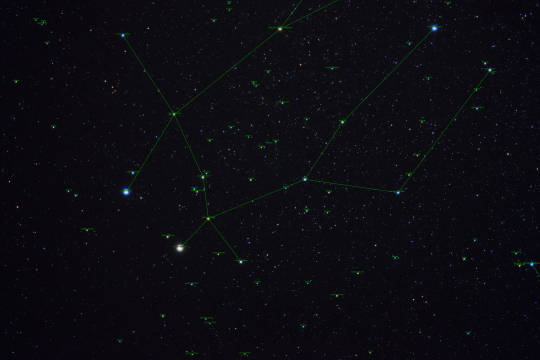
#astronomy#astrophotography#constellation#stars#star system#binary star#triple star system#castor#pollux#alpha geminorum#beta geminorum#etymology#gemini
44 notes
·
View notes
Photo
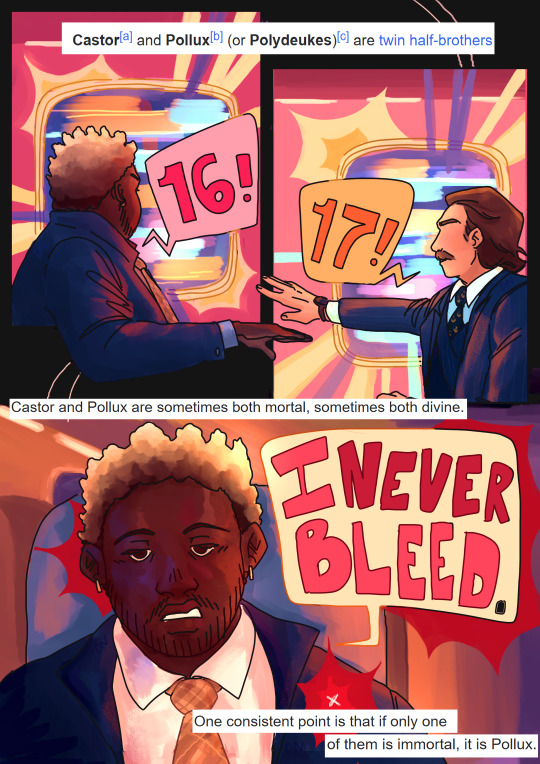
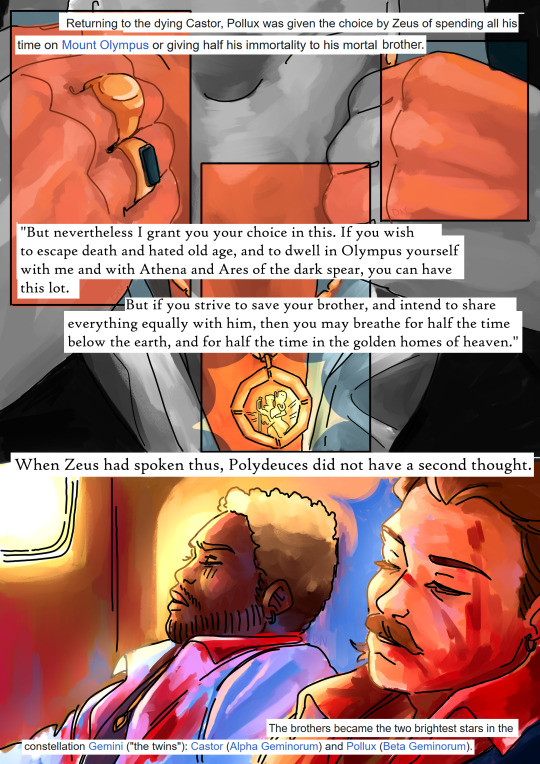
the Dioscuri
[1] Castor and Pollux (2022) Wikipedia. Wikimedia Foundation.
[2] Svarlien, D.A. (1990) Pindar, Nemean 10, Pindar, Nemean, Nemean 10 For Theaeus of Argos Wrestling 444 B. C.
[ID: Two page comic of Lemon and Tangerine from Bullet Train, with text from the Wikipedia page on the brothers Castor and Pollux and Nemean Odes 10 throughout the two pages. The first page reads, “Castor and Pollux (or Polydeukes) are twin half-brothers” over two frames of Lemon and Tangerine fighting over whether they killed 16 or 17 people, then “Castor and Pollux are sometimes both mortal, sometimes both divine.” There is a drawing of Lemon saying, “I never bleed.” in stylized text, then the Wikipedia entry continues: “One consistent point is that if only one of them is immortal, it is Pollux.”
The second page is in two halves, the first half being Tangerine taking off his pendant to give to Lemon. Some parts of the drawing are in colour, some are in greyscale. Over it, the Wikipedia entry reads: “Returning to the dying Castor, Pollux was given the choice by Zeus of spending all his time on Mount Olympus or giving half his immortality to his mortal brother.” The excerpt from the Nemean 10 follows: “‘But nevertheless I grant you your choice in this. If you wish to escape death and hated old age, and to dwell in Olympus yourself with me and Athena and Ares of the dark spear, you can have this lot. But if you strive to save your brother, and intend to share everything equally with him, then you may breathe for half the time below the earth, and for half the time in the golden homes of heaven.’ When Zeus had spoken thus, Polydeuces did not have a second thought.” The second half of the page is a drawing of the scene where Lemon sits next to Tangerine’s dead body. Both are covered in blood and the sunrise is shining on them through the train’s window. The last bit of the Wikipedia entry reads: “The brothers became the two brightest stars in the constellation Gemini (”the twins”): Castor (Alpha Geminorum) and Pollux (Beta Geminorum).” End ID.]
#bullet train 2022#bullet train#bullet train tangerine#bullet train lemon#the twins#tw blood#my art#look i know the two pages look like theyre totally different art styles and well.#it is what it is!#and yes I did include citations. leave me alone
612 notes
·
View notes
Text
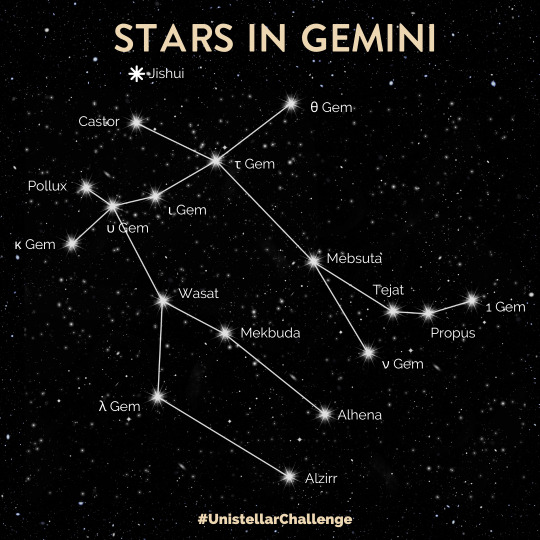
Gemini Constellation: Stars, Myth, and Location (2024)
Gemini constellation
The Gemini constellation is one of the twelve constellations of the Zodiac. It is also known as the Twins and has its roots in Greek mythology. It appears in the fascinating story of the Gemini twins mythology, Pollux and Castor.
Gemini is easy to spot in the sky. It lies northeast of Orion and between Taurus and Cancer. It has two bright stars, with the Gemini twin names, each indicating the position of their heads.
You can see Gemini in both hemispheres and it is a great constellation for home stargazers to view. It contains a number of interesting objects, including Messier 35.
It is also known for the incredibly beautiful Medusa Nebula, named after a dreadful Greek Gemini mythological character. Read on to find out all about the Gemini twins and Gemini constellation facts.
Major stars in Gemini
Here is a list of the most important stars in Gemini.
Castor – Geminorum (Alpha Geminorum)
Castor gets its name from one of the Gemini twins. It is the 2nd brightest stars of Gemini and the 44th brightest star in the sky. The star is made up of 6 components. Together they have a combined apparent magnitude of 1.58. Castor marks the head of the twin. Castor is a bluish-white star and you can see it without a telescope. It lies 50.88 light-years away.
Pollux – Geminorum (Beta Geminorum)
You may ask – what is the brightest star in Gemini? It is Pollux. Pollux gets its name from the second twin in the Greek myth. It is a red giant star about 33.78 light-years from Earth. Pollux is also the 17th brightest star in the night sky.
Its name in Arabic is Al-Ras al-Tau’am al-Mu’akhar, which means “The Head of the Second Twin.” Pollux, as one of the Gemini constellation stars, is interesting in that it has an exoplanet that orbits it. The planet is Pollux b, discovered in 2006.
Alhena (Almeisan) – Geminorum (Gamma Geminorum)
Alhena (Gamma Geminorum) is another interesting Gemini star. It is the third brightest star in Gemini. It is a white subgiant and lies about 109 light-years away. The star has an apparent magnitude of 1.915. Size-wise, it is 4 times larger than the sun and 123 times brighter. The name comes from the Arabic, Almeisan, which means “the shining one.”
Mebsuta – Geminorum (Epsilon Geminorum)
Mebsuta is a double star, consisting of a magnitude 3.4 brilliant white and a 9.5 magnitude cerulean blue. These stars in Gemini constellation sit at the right knee of the twin Castor. The name comes from the Arabic Mebsuta, which means “the Outstretched,” and originally marked the paw of the Arabic Lion constellation.
Tejat Posterior – Geminorum (Mu Geminorum)
Mu Geminorum is a red giant and is the fourth brightest star in the Gemini star constellation. It has a visual magnitude of 2.857 and is about 230 light-years away. The traditional name is Tejat Posterior, which means “the back foot.” It lies at Castor’s foot. The star is also known by another Latin name, Calx, which means “the heel.”
Tejat Prior – Geminorum (Eta Geminorum)
Eta Geminorum is another important star in Gemini. It is also known as Tejat Prior. It is a multiple star about 350 light-years away. It is made up of a binary star and a dwarf star that orbit the pair once in 700 years. With an apparent visual magnitude of 3.15, it is the seventh brightest of the Gemini stars in the constellation Gemini. Eta Geminorum is about 3.16 times more luminous than our Sun.
Alzirr – Geminorum (Xi Geminorum)
The name Alzirr in Arabic means “button” and marks one of the four feet of the star twins. It has an apparent magnitude of 3.35 and you can see it without a telescope. The star lies about 58.7 light-years away. This yellow-white subgiant is about 11 times brighter than our Sun.
Propus – Geminorum (Iota Geminorum)
The name Propus comes from the Greek meaning “forward foot,” and the star indicates the foot of the twin, Castor. Propus has an apparent magnitude of 3.78 and is approximately 326 light-years away. It is a binary star system and is a red color.
Wasat – Geminorum (Delta Geminorum)
Delta Geminorum is also known as Wasat. The name means “middle” in Arabic. It has a visual magnitude of 3.53 and you can see it with the naked eye. The star is a triple star system and lies about 60.5 light-years from our solar system. Wasat is about 1.6 billion years old. The star indicates the middle of Pollux’s body.
43 notes
·
View notes
Photo
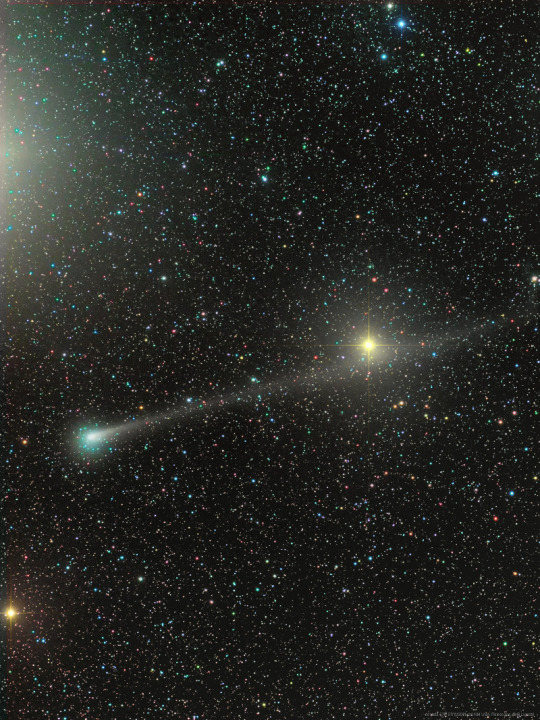
Rosetta s Comet in Gemini : Returning along its 6.4 year orbit, periodic comet Churyumov-Gerasimenko (67P) is caught in this telescopic frame from November 7. Sweeping past background stars in the constellation Gemini the comet's dusty tail stretches toward the upper right to Upsilon Geminorum. Also known as Pollux, Beta Geminorum, Gemini's brightest star, shines just off the upper left edge of the field-of-view. Churyumov-Gerasimenko reached its 2021 perihelion or closest approach to the Sun on November 2. At perigee, its closest approach to planet Earth on November 12, this comet was about 0.42 astronomical units away, though it remains too faint to be seen by eye alone. The well-studied comet was explored by robots from planet Earth during its last trip through the inner solar system. It's now famous as the final resting place for the historic Rosetta spacecraft and Philae lander. via NASA
909 notes
·
View notes
Text
dailymotion
Astrology is total crap, there's no getting around that. Nobody explained why in a more effective way than astronomer Carl Sagan.
Earth's precession (a type of natural wobble) and the proper motion of the stars themselves have changed the way we Earth people view the night sky in the 3,000 or so years since astrology was concocted. In fact, there are actually 13 rather than 12 constellations the sun appears in throughout the course of the year. And the dates the sun enters and leaves those constellations of the zodiac can be weeks off from what astrologers tell you.
And just because stars appear close to each other from our perspective on Earth does not mean they are actually close to each other in reality.
Here is a diagram of the brighter stars in Gemini. The ones labeled range from Pollux (Beta Geminorum) which is an estimated 34 light years away to Mekbuta (Zeta Geminorum) which is about 1200 light years away. BTW Wasat (Delta Geminorum), which they forgot to number, is 60 light years away.
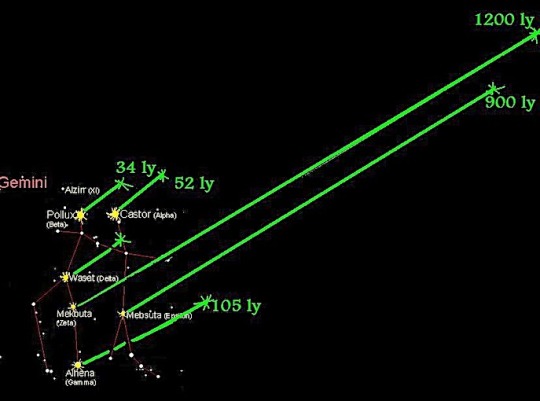
So a constellation is not some sort of special conclave of stars, it's a random collection which simply appears in the same patch of the sky as seen from Earth. The same is true of the other constellations – not just Gemini.
So your destiny has nothing to do with the changing positions of the stars and planets. Sorry! But we do all share a far more concrete connection to the universe.
All the elements except for hydrogen, helium, and (a tiny bit of) lithium were created inside of stars which blew up or ejected much of their contents billions of years ago.
I edited together a few sentences from the companion volume for the COSMOS series which the vid above comes from.
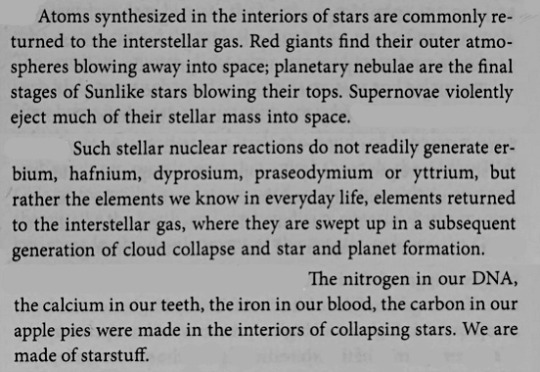
So yeah, the universe is inside all of us. That's our true connection to the cosmos.
13 notes
·
View notes
Text
names based on solar systems
an / ann - andro - andra - androm / androme - andromi - andromid - andromida - andromidae
ara
bo / boe / bow / beau - bor / borr - bori / borie / bory - boria - borea - boreal - boreali - borealis
bet / bett - beta
can - cancri
cy - cyg - cygni - cygnus
cor / corr - coro / corro - coron / corron / corran / coran - corona - coronus - coronae
ceph / cephe - cephi - cephei
dra / dray / drae - drac / drack - draco - dracon - draconi - draconis
ep - epsi - epsil - epsilo - epsilon
eri - erid - erida - eridan - eridani
gli / glie / glee - glis / gliss - glies / gliess / gliese
gam / gamm - gamma
gem - gemi - gemini - gemin - gemino - geminor - geminora - geminoru - geminorum
herc - hara - haracle - haracles / haraclese - hercu - hercule - hercules - herculean - herculis
horo / horro - horol - horolo - horologii
io - iot / iote - iota
kep - kepler
li / ly - libra
milk - milky - milkyway
ogle
peg - pega - pegas - pegasus - pegasi
pi / py - pisce - pisces
poll - pollu - pollux
rho
sol
sun
taur - tauri - taurus
ur - urs - ursa - ursae
upsi - upsil - upsilon
vi / vy - vir - virgo - virgi - virginia - virginis
wasp
#solar systems#names of solar systems#names from solar systems#names of#names from#name lists#name suggestions#read dni#name ideas#name blog#read my dni#name request#name inspiration#baby names#gender neutral names#fleur speaks#space names#space theme#space
52 notes
·
View notes
Text

— Welcome to Morgan Lawson's Tumblr Blog! ☆
My name is Morgan Lawson. I am an author and poet from Buffalo, NY. I have three different books in process right now, one of which is in the beta reading stage and the other two being in the brainstorming/loose drafting phase! Look for me on other socials and shoot me a message if you want to be friends!

And see below to learn more about my different projects!

THE STARS WANT BLOOD
Book One: Fate
GENRE — Fantasy romance.
STATUS — Being beta read!
ABOUT — When Hazel Culhane slips away to the mountains for a much needed escape, their life is changed forever when it is brought to their attention that they're not just a hot mess of a mechanic but that they are actually a Constellite of Geminorum—a literal god. While grappling with their newfound divinity, they are faced with an even greater challenge yet: love, in the form of the Constellite of Virginis, Ezra Thompson. Fate has brought them together, but that same fate also intends to tear them to pieces.
TROPE LIST — Friends to lovers to enemies to lovers, angst, yearning, soulmates, red string of fate, golden retriever x black cat, Scorpios are menaces, dark prophecies, fuck fate, lgbtqia+, only the most intimate of relationships/friendships in this house, astrology, loose interpretation of Greek mythos, chaotic gemini x anxious Virgo.
CONTENT WARNINGS — Gore, violence, sexual content, mental illness, BDSM themes, blood, body horror, emotional trauma.
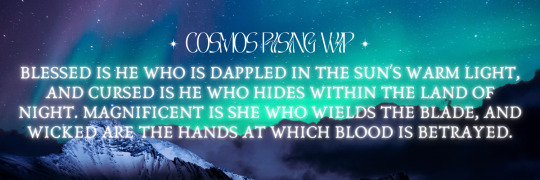
COSMOS RISING WIP
Book One: Untitled
GENRE — Fantasy romance.
STATUS — Brainstorming, loosely drafting.
ABOUT — When esteemed dragonslayer Izrena Dewmane bites off more than she can chew and makes a mistake that should cost her her life, dragon prince Rolinas Cosmashiels III decides to make an example of her, the example being that mortals and dragonkin can coexist peacefully. Now forced to live in a castle of scaled beasts, Izrena learns that maybe he's right, and maybe they aren't so bad. Maybe, actually, they're worse.
TROPE LIST — Sun x moon lovers, dragon prince brothers, enemies ➝ friends ➝ lovers ➝ enemies/your brother be lookin' kind of cute tho', she's hot and she has an axe, world's cutest gay necromancer villain, medieval vibes, bisexual disasters, found family, mental illness recovery, morally gray characters, lgbtqia+, forced proximity, anger, recovery.
CONTENT WARNINGS — Violence, sexual assault (off page/historical), explicit sexual content (on page), gore, body horror, war, emotional trauma.

PHANTOMS OF WINTER
GENRE — Paranormal romance.
STATUS — Brainstorming, loosely drafting.
ABOUT — When Aella Lewis, girl turned ghost, finds herself trapped in her childhood home she finds that maybe being dead is actually worse than living. And as if being a stuck phantom isn't bad enough, she finds herself trapped with Kharon, Hades' esteemed ferryman and an absolute bastard of a man. A tale of healing, unexpected friendships, and love.
TROPE LIST — Loose interpretation of Greek mythos, enemies to lovers, moon x mars lovers, black cat x even more feral black cat lovers, angst, smut, bisexual disasters, found family, mental illness recovery, morally gray characters, lgbtqia+, forced proximity, ghosts, anger, recovery.
CONTENT WARNINGS — Unfiltered depiction of mental illness, suicide, suicidal ideation, mention off of-page self-harm, drug use/abuse, explicit (consensual) sex, emotional trauma, BDSM themes.
3 notes
·
View notes
Text
Galactic Gazetteer: Iota Geminorum IV

AKA: Fafnir, "Tribble Prime"
Class: M
Quadrant: Beta
Territory: Klingon Empire
Animal life: tribbles, reptilian predators
Appearance: "The Truth About Tribbles" (IDW comic story)

Fun fact: in the Prime Timeline, the tribble planet was bombarded by the Klingons during the great tribble hunt and left lifeless.

Another fun fact: Tribbles returned to the Prime Timeline galaxy through the magic of time travel.
2 notes
·
View notes
Text
Rie [Sabbath of Castor] Part 1

Rie: Eloim, Essaim, Eloim, Essaim, frugativi et appelavi! [1]
Rie: Heheheh….Hark! For this night is the eve of my nativity. At this very hour we must needs confirm the proceedings for the ceremony of my earthly nascence.
Rie: And so! I summon thee, blood of my blood. Heed my voice and appear before me at once!

Mei: You called?
Rie: I sure did! That was quick.
Mei: I figured it was best to get it over with.
Mei: Otherwise you would have kept messaging me with those weird incantations.
Mei: So, what is it?
Rie: I was wondering if you were, er…doing anything tomorrow?
Mei: I am, as a matter of fact. I’ll be doing something very important.
Rie: O-oh…I see. That’s, um…that’s disappointing, but it happens…
Mei: Disappointing? I’ll be celebrating your ‘nativity’.
Rie: Huh?
Mei: After all this time, you hardly need to ask if I’m doing anything on your birthday.
Rie: Oh…oho! I see now! So that is what you meant!
Mei: Is that why you wanted to talk to me?
Rie: Yes, I wanted to confirm if we would be spending the day together…
Mei: I have it all planned out. I won’t tell you where we’re going, but all you need to do is follow me.
Rie: Huh? I don’t think you’ve done anything like that before. What’s brought this on, Mei?

Mei: …Tomorrow.
Rie: Tomorrow?
Mei: We’ll talk about it tomorrow, if an opportunity arises.
Rie: Oh, sure… I’m not sure I understand, but! I leave tomorrow in your capable hands.
Mei: Good. We’re not going particularly far, so we’ll leave around noon.
Mei: …Will that be all? I have clan wars to get back to.
Rie: Y-yeah. Sorry for interrupting you.
Mei leaves.
Rie: I don’t have any idea what she’s planning, but it sounds like she’s put a lot of thought into it. I’m looking forward to it.
Rie: Hehe. I wonder where she’ll take me.
---

Mei: Here we are.
Rie: It’s Ikebukuro! Gosh, it sure has been a while.
Mei: We used to come here all the time when we were younger.
Rie: Indeed. It was but a single train ride away, after all.
Mei: At first, your mother would take us.
Rie: Yeah.
Mei: And then, when we were old enough to go by ourselves, it was just the two of us.
Rie: I guess we kind of just stopped going after we moved to the dorm?
Mei: Indeed. That is why I chose it as the site for our celebration of your nativity.
Rie: Makes sense.
Mei: Follow me.
Mei: Oh, and…here.
Rie: What’s this? A parasol?
Mei: The sun’s UV rays are stronger than you’d think in the winter. The light of the sun is the bane of the children of darkness, is it not?
Rie: That’s true! I should have brought one too.
Mei: You tend to forget the finishing touches like that.
Rie: Ngh…




Rie: Huh? What about you?
Mei: I only brought the one. Today’s all about you, so you should use it.
Rie: I can’t just leave you high and dry! Here, there’s plenty of room for both of us. Come on in.
Mei: …Okay.
To be continued...in Part 2
---
Notes
The card title alludes to Castor, a figure from Greek myth and one of the Dioscuri twins along with his brother Pollux. In their most popular stories, Castor was fully human and mortal while Pollux was immortal and a son of Zeus. They are also associated with the constellation Gemini, with the two brightest stars in the constellation (Alpha and Beta Geminorum) also being known as Castor and Pollux.
[1] Rie recites an invocation that appears to trace back to the "Grand Grimoire", a European book purporting to contain instructions relating to summoning demons. The chant is somewhat popular in anime and manga, seemingly first being used by Akuma-kun and perhaps most notably seen in Your Lie in April.
Here's an article by an actual historian tracing the path the phrase has taken (nothing here is important for the card story but I just think it's genuinely interesting): https://er.ceres.rub.de/index.php/ER/article/view/10440/9928
0 notes
Text
Gemini (May 21 - June 21)
playful ~ curious ~ ambitious
Gemini, (Latin: “Twins”) in astronomy, zodiacal constellation lying in the northern sky between Cancer and Taurus, at about 7 hours right ascension and 22° north declination. Its brightest stars are Castor and Pollux (Alpha and Beta Geminorum); Pollux is the brighter of the two, with a magnitude of 1.15, and is the 17th brightest star in the sky. The summer solstice, the northernmost point reached by the Sun in its annual apparent journey among the stars, lies in Gemini. This constellation also contains the isolated pulsar Geminga.
In astrology, Gemini is the third sign of the zodiac, considered as governing the period from about May 21 to about June 21. It is represented by a set of twins (or in Egyptian astrology by a pair of goats and in Arabian astrology by a pair of peacocks). In addition to their identification as Castor and Pollux, the twins have also been related to other celebrated pairs, such as the younger and older Horus or Romulus and Remus.

“Geminis are flexible, extroverted, and clever and there’s never a boring moment while they’re around.”
Astrological sign and it’s spiritual links
Tarot card
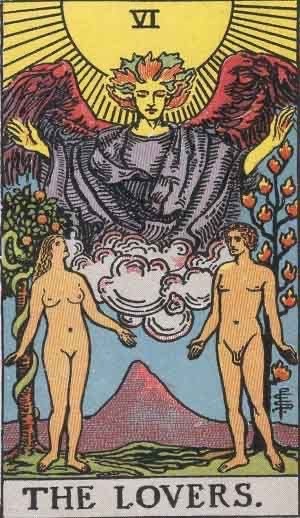
The Lovers card represents having two strong options, and the need to make a decision between them: two people, two choices, two sides, etc. The depiction of Adam and Eve in The Lovers card symbolizes duality -- they are two halves of a greater whole. The man is gazing forward, because he represents physical presence. The woman, however, is looking upward, representing an intuitive presence. With the combined forces of body and mind, they create one whole, just like the Gemini Twins. These Twins are not actually identical twins, but represent two sides of the same person, two halves.
Andromeda, S. (2019). Gemini. Hardie Grant.
The Gemini mind is quick, agile and full of dazzling brilliance. Gemini, have the ability to enlighten other people’s minds. When times are tough and people feel dark, sombre and overwhelmed by life’s changes, they have the wonderful ability to be able to humour them and make them feel as if it’s not all as bad as it appears to be.
youtube
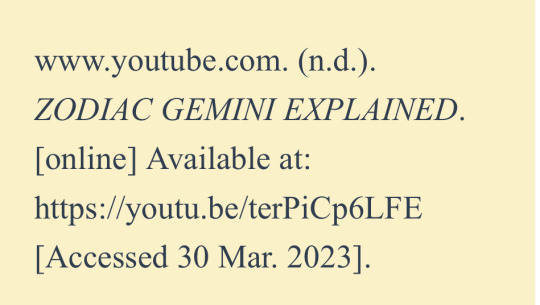
1 note
·
View note
Text
some (poor quality haha) photos i took tonight, im pretty sure i identified the stars correctly
taken from around 59°55’N latitude with an iphone 13 between 23:45 and 00:30 :)
photos on their own under the cut!


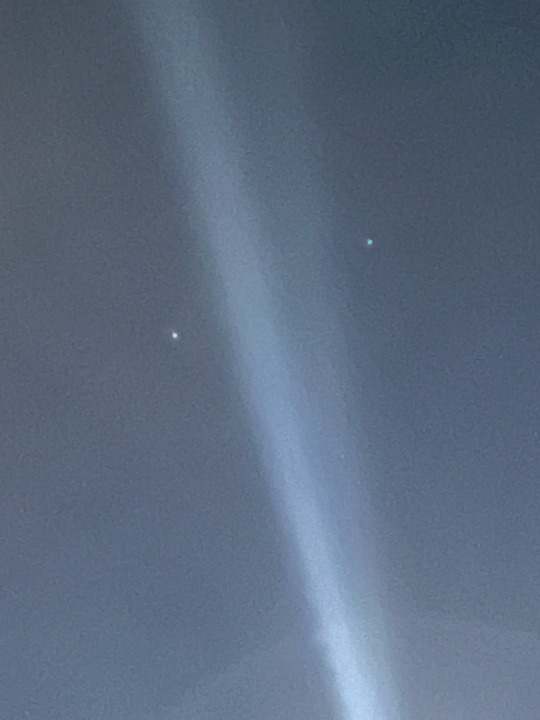
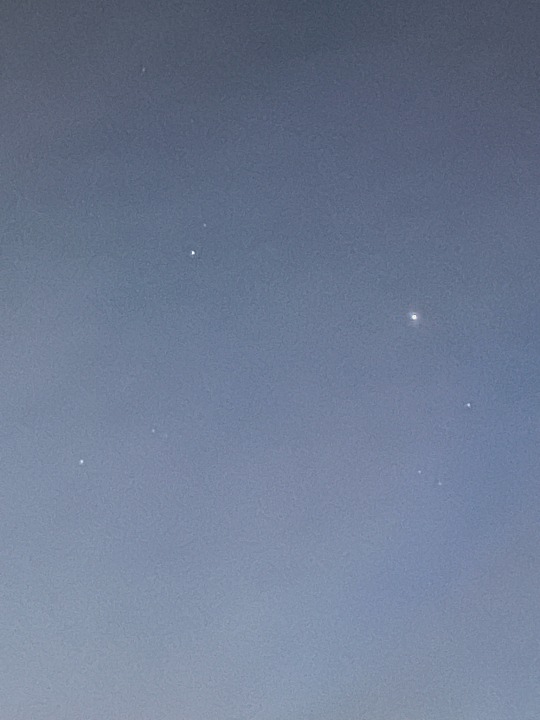
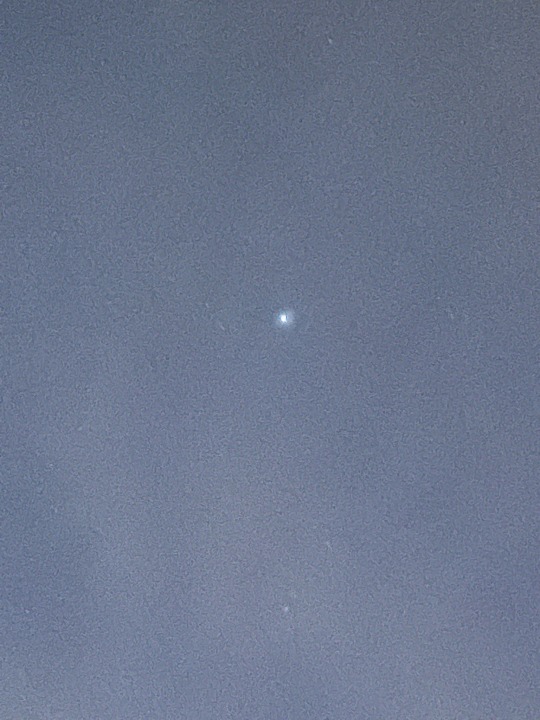
#astronomy#star photography#moon photography#space#polaris#alpha ursae minoris#pollux#beta geminorum#castor#capella#alpha aurigae#menkalinan#beta aurigae#vega#alpha lyrae
4 notes
·
View notes
Text

A few double stars in the northern skies // Dark Rangers
Rasalgethi (α Herculis) is a true multiple star system, a triple star system. The name comes from the Arabic phrase ra'is al-jāthī meaning "head of the kneeler," the "kneeler" being Hercules.
Polaris (α Ursae Minoris) is another true triple star system. The name comes from Neo-Latin stella polaris meaning, unsurprisingly, "polar star."
Mizar (ζ Ursae Majoris) is a quadruple star system, with each pair being seen as a "single" star. The name comes from the Arabic word mi'zar meaning "apron, wrapper, or covering."
Almach (γ Andromedae) is a quadruple star system. The name comes from the Arabic word al-'anāq meaning "the caracal," also known as a desert lynx.
Albireo (β Cygni) is probably a visual binary, meaning the two stars just happen to be close to each other on the sky. The name has an uncertain origin, tracing back to Ptolemy.
Castor (α Geminorum) is a sextuple star system, made up of three pairs of stars. The name has its origin in the Greek myth of the twins Castor and Pollux.
#astronomy#astrophotography#stars#double star#rasalgethi#alpha herculis#polaris#alpha ursae minoris#mizar#zeta ursae majoris#almach#gamma andromedae#albireo#beta cygni#castor#alpha geminorum#hercules#ursa minor#ursa major#andromeda#cygnus#gemini
67 notes
·
View notes
Photo
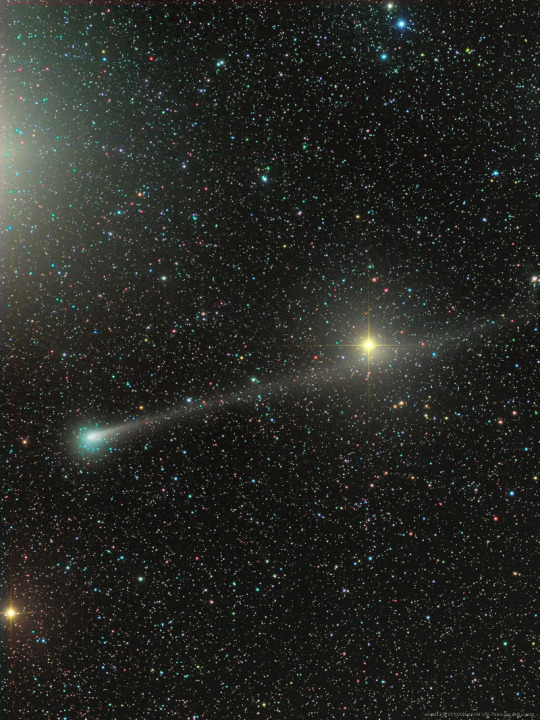
2021 November 13
Rosetta's Comet in Gemini
Image Credit & Copyright: Rolando Ligustri (CARA Project, CAST)
Explanation: Returning along its 6.4 year orbit, periodic comet Churyumov-Gerasimenko (67P) is caught in this telescopic frame from November 7. Sweeping past background stars in the constellation Gemini the comet's dusty tail stretches toward the upper right to Upsilon Geminorum. Also known as Pollux, Beta Geminorum, Gemini's brightest star, shines just off the upper left edge of the field-of-view. Churyumov-Gerasimenko reached its 2021 perihelion or closest approach to the Sun on November 2. At perigee, its closest approach to planet Earth on November 12, this comet was about 0.42 astronomical units away, though it remains too faint to be seen by eye alone. The well-studied comet was explored by robots from planet Earth during its last trip through the inner solar system. It's now famous as the final resting place for the historic Rosetta spacecraft and Philae lander.
∞ Source: apod.nasa.gov/apod/ap211113.html
137 notes
·
View notes
Photo
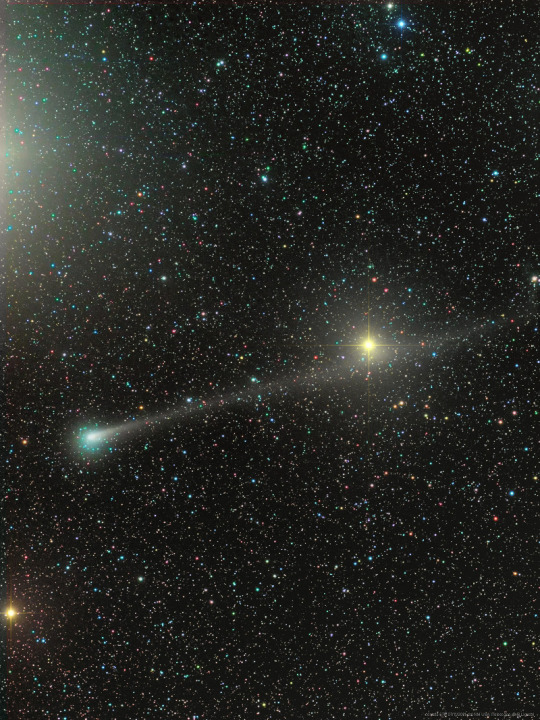
Rosetta s Comet in Gemini
Returning along its 6.4 year orbit, periodic comet Churyumov-Gerasimenko (67P) is caught in this telescopic frame from November 7. Sweeping past background stars in the constellation Gemini the comet's dusty tail stretches toward the upper right to Upsilon Geminorum. Also known as Pollux, Beta Geminorum, Gemini's brightest star, shines just off the upper left edge of the field-of-view. Churyumov-Gerasimenko reached its 2021 perihelion or closest approach to the Sun on November 2. At perigee, its closest approach to planet Earth on November 12, this comet was about 0.42 astronomical units away, though it remains too faint to be seen by eye alone. The well-studied comet was explored by robots from planet Earth during its last trip through the inner solar system. It's now famous as the final resting place for the historic Rosetta spacecraft and Philae lander.
November 13, 2021
via Space https://ift.tt/3Faz9ZX
25 notes
·
View notes
Note
I'll bite. How does Club Penguin exist within the Star Trek Universe?
They exist in the polar region of Iota Geminorum IV, aka the Tribble Homeworld. Tribbles are Puffles. Club penguin mostly takes place pre first contact but there are multiple instances of alien abduction, which is how tribbles/puffles first began to spread through the alpha and beta quadrants.
17 notes
·
View notes
Photo

Rosetta s Comet in Gemini via NASA https://ift.tt/3Faz9ZX
Returning along its 6.4 year orbit, periodic comet Churyumov-Gerasimenko (67P) is caught in this telescopic frame from November 7. Sweeping past background stars in the constellation Gemini the comet's dusty tail stretches toward the upper right to Upsilon Geminorum. Also known as Pollux, Beta Geminorum, Gemini's brightest star, shines just off the upper left edge of the field-of-view. Churyumov-Gerasimenko reached its 2021 perihelion or closest approach to the Sun on November 2. At perigee, its closest approach to planet Earth on November 12, this comet was about 0.42 astronomical units away, though it remains too faint to be seen by eye alone. The well-studied comet was explored by robots from planet Earth during its last trip through the inner solar system. It's now famous as the final resting place for the historic Rosetta spacecraft and Philae lander.
(Published November 13, 2021)
13 notes
·
View notes